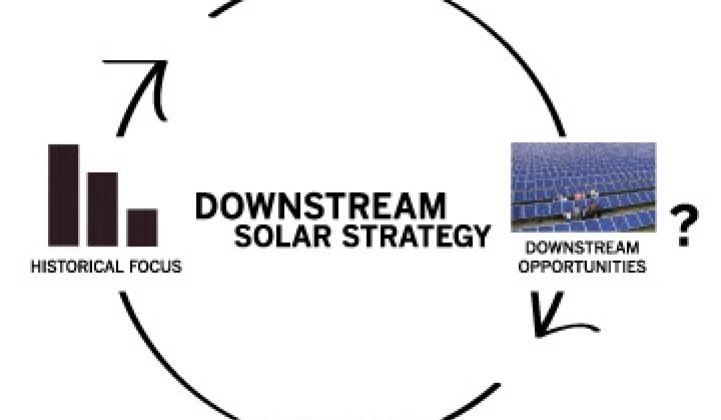Persistent oversupply at the module level has led many module manufacturers to contemplate an entry into building plants, project development, and energy sales. First Solar's proven success in building and operating utility-scale plants over the last two years has also done these desires no harm.
Downstream integration can have definite benefits: it creates a sales channel for modules, which can protect shipments and margins in a highly competitive environment. It also enables overall margin expansion, since the module producer can capture the developer's margin. Those in favor point to the likelihood of modules becoming increasingly commoditized in the future, transforming into a low-margin business; with the onset of unsubsidized grid parity, they say, profits will shift to "selling electrons."
On the flip side, developing a successful systems business involves competing with one's customers and straying from the core competence of manufacturing. Developing projects also requires a completely different skill set from producing modules; it is difficult to see a module vendor being able to compete with an established developer unless profit margins at the module level are high, in which case it would make little sense to branch out of manufacturing in the first place. Traditionally, successful downstream integration in PV has taken the form of acquisition (First Solar, SunPower), and few thin film firms have the balance sheets necessary to do so; the few that do are Chinese a-Si companies with large corporate parents (Astronergy, ENN Solar, QS Solar).
As far as profits shifting from modules to electricity sales, that is a long way off at this point. First Solar expects its EPC/systems business to have a margin of only 5 to 6 percent in 2010, compared to 40 percent for modules. Its decision to integrate downstream was made to enable it to penetrate a market that it otherwise would not have been able to -- namely, the U.S. utility-scale market -- and until recently, it did not place this market against its European customers. The answer to the natural question -- why bother? -- lies in First Solar's long-term vision to singlehandedly enable parity, a vision that emerging manufacturers can ill afford to have.
As far as thin film is concerned, First Solar is likely to be an anomalous case rather than a trend-setter in this department. While there will likely be a push from manufacturers to engage in plant construction/development/operation in 2010, the companies that manage to do so successfully and reap sustainable benefits from this will be few and far between; in future years, it will be seen as a short-term reaction to market forces, rather than as a sound long-term strategy. Instead of full-on integration, what makes more sense is developing strong strategic relationships with downstream players. This has already begun to happen -- ENN Solar, for example, inked a partnership agreement with U.S. utility Duke to jointly develop commercial PV projects, and Signet Solar has collaborated with German developer BSC-Solar on project development in Europe. Other companies that succeed in doing so will gain a significant competitive advantage in the marketplace in the years to come -- never a bad thing in what in a few months time will re-emerge as a grossly oversupplied market.



